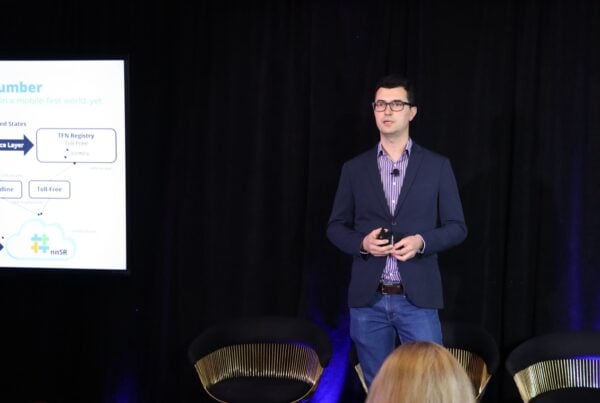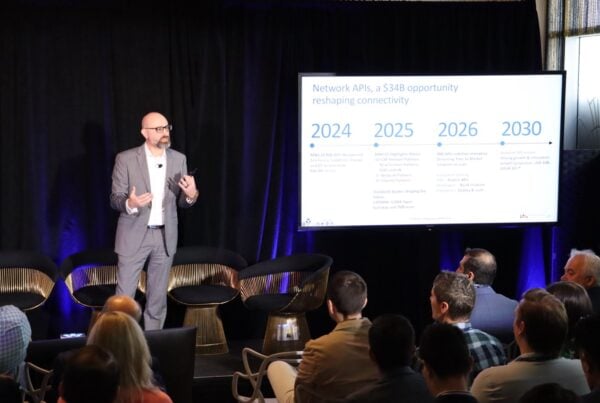MEF Member CLX Communications and Juniper Research, have released a new white paper that explores the rise of Communications as a Platform (CPaaS), and how enterprises can harness the tech to enhance their customer offering.
The last decade has seen a rapid change in how enterprises buy software and hardware, primarily driven by the boom in Software as a Service (SaaS) and Infrastructure as a Service (IaaS).
These trends are having a profound effect on how companies communicate with their customers, which is particularly important in a culture driven by instant gratification and demand for exceptional customer service, especially whilst on the move in a mobile-first world.

Therefore, our latest white paper in partnership with Juniper Research, explores the rise of CPaaS and looks at how enterprises are using CPaaS to differentiate their customer experience offerings, reduce costs and speed innovation.
Entitled ‘Communications Platforms – Transforming Enterprises into Digital Innovators’, here are five-key takeaways:
Customer service is more seamless with CPaaS
CPaaS enables enterprises to reduce fragmentation in the customer journey, by integrating voice, video and text functionality within their own applications.
For example, CPaaS API’s enable deep integration of communications capabilities such as chatbots, service agents and contact centers into customer-facing applications, so that options such as click-to-call and click‑to‑message can be included with minimal time and effort.
Enterprises spend on CPaaS is ramping up
 CPaaS is going mainstream
CPaaS is going mainstream
Whereas, early CPaaS adopters have primarily been agile, disruptive, digital-first players, these are increasingly being augmented by more established businesses that have recognized the importance of a differentiated and personalized customer service approach to attracting and retaining customers.
Enterprises are now embracing CPaaS to enable omnichannel engagement to deliver alerts, reminders and targeted marketing, while AI is facilitating more sophisticated chatbot interactions. These can all be used in tandem with other communications channels on the platform, such as voice and video.
In addition, these larger organisations will also be likely to deploy CPaaS for internal, as well as external, communications. This means that enterprises no longer have to use separate, dedicated hardware or third party software applications for internal or external communications, but can now offer voice, video and messaging in their own app, business support system or call center solution which connects to the platform via the APIs.
CPaaS is helping enterprises to stay ahead of the innovation curve
The rapid pace of technological change can be a problem even for the most agile of enterprises. New technologies and devices in turn spawn new patterns of demand, meaning that keeping pace, let alone future-proofing, can be a challenge.
CPaaS offers a highly flexible solution which allows greater scalability, while reducing time-to implementation. Therefore, enterprises using CPaaS can continually evolve their customer engagement channels in line with consumer demand. This is why enterprise spend on CPaaS is set to surge in the next four years.
Enterprises are saving on resources, infrastructure & time to market with CPaaS
Cloud solutions have always enabled significant savings on resources and infrastructure. However, with Platform as a Service (PaaS) solutions, developers can begin work immediately, unhindered by concerns about security and scalability which are handled by the PaaS provider.
PaaS implantation means that there are no upfront costs, while implementation costs are likely to be minimal, given that the middleware stack is managed by the PaaS provider.
In addition, key areas such as application testing and deployment, platform monitoring and administration costs are also slashed as much of the operations burden falls on the platform provider.
Another benefit is that by using CPaaS, enterprise developers only pay for the services they need, thereby significantly reducing spend on unnecessary resources.
This post originally appeared on the CLX Communications blog and is reused with kind permission.
Download the CLX Communications & Juniper Research Whitepaper
There’s a lot of noise on the topic of CPaaS (Communications Platform as a Service), but what’s it all about?
Download the whitepaper now to find out how it can enable developers to add communications capabilities to mobile apps and enterprise systems without needing to build either the network infrastructure or the supporting interfaces.





I would like to receive the whitepaper.
Thanks
Sven